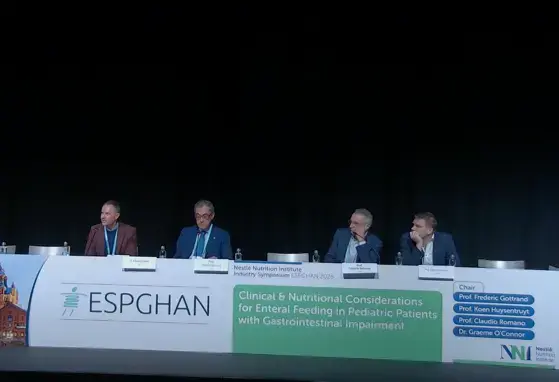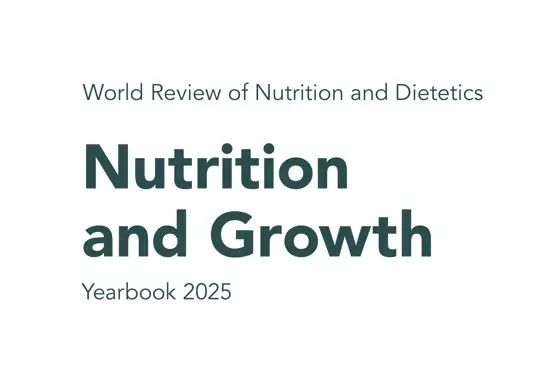Food Security Nutrition And Hiv Aids In The Southern African Region
14 min read
/
Nutrition & Disease Management
One of NNIA’s sub-regional scientific workshops on Food Security, Nutrition and HIV/AIDS took place on 16 – 17 August 2007 in Harare, Zimbabwe. The workshop’s goal was to raise awareness and mobilise commitment amongst all stakeholders regarding the activities required to galvanise into action Article 28 of the UNGASS Declaration of June 2006. It set out to do this through three specific objectives:
To raise awareness of Article 28 and its scientific implications
To explore the potential for using it to secure action in the field of food and nutrition
To develop appropriate nutrition and impact indicators for progress reporting
Background
A report of a late 2002 six-nation trip by UN Envoy and World Food Program (WFP) Executive director stated:
“HIV/AIDS is a fundamental, underlying cause of vulnerability in the southern Africa region and represents the single largest threat to its people and societies” (UN 2002).
Another report that followed it in 2003 stated:
“The mission reasserted that HIV/AIDS is the most fundamental underlying cause of the southern African food crisis….. The link between food security and HIV/AIDS must fully be recognized in all government, United Nations, intergovernmental and NGO efforts to address food emergencies and in their support of HIV / AIDS – affected populations” (UN 2003).
The situation has not improved since then. In fact it is getting worse by the day. Due to a lack of donor support, WFP across the southern African region began to reduce the level of food assistance since September 2006. After the good harvests, WFP scaled down general food assistance to concentrate on people with the most chronic needs – such as those living with HIV/AIDS, mother and child nutrition centres, and school-feeding projects. Despite some abundant rains this year, millions of people were too poor to buy seeds and fertilisers to grow food or buy grains once they were harvested. In Zimbabwe alone, the May 2006 vulnerability assessment identified 1.4 million people as being in critical need of food assistance. Yet in October 2006, WFP was forced to scale down operations in the country to roughly half of the 900,000 people. Further reductions may have to be imposed unless donor contributions are received. Zimbabwe is one of seven countries under a regional WFP operation, which began in January 2005 and is scheduled to continue through December 2007. The other countries under the operation are Lesotho, Malawi, Mozambique, Namibia, Swaziland and Zambia. They are facing similar shortfalls (WFP 2006).
In summary, the southern African regional level of the number of ‘food surplus’ countries has decreased thereby increasing the region’s overall dependency on global markets and food aid. At national level, few countries produce enough food to meet their own needs, making the rest dependent on their capacity to purchase imported food. At the local level, many households are poor, cannot cover their own food requirements, and rely on food aid. Food distribution networks are often inadequate to ensure availability of sufficient food at the local level.
The question that arises is, “How does HIV/AIDS interact with food crisis?” The term “new variant famine,” which has gained significant currency is now used to differentiate what, for example, is thought to be happening in southern Africa from famines in pre-AIDS era. HIV/AIDS is likely to radically exacerbate food crises in, for example, the following ways:
drastically raising dependency ratios since the young and productive are dying
women who are normally responsible for gathering famine foods are more vulnerable to HIV infection
Since a wide array of people with different backgrounds are now engaged in responding to the crisis, it is important to have common definitions.
Food resources: According to the Oxford Dictionary, human food resources are ‘substance(s) taken into the human body to maintain life and growth’. These resources cover a diverse range of products including cereals, conventionally cultivated crops, vegetables, fruits, edible oils, meat, milk, dairy products, fishery products and other (non-conventional) products collected from the natural environment or cultivated. Food provision is therefore about ensuring that people take in a sufficient variety of substances to maintain life and growth.
Each food resource has its unique ‘production belt’, which is based on physiological and climatic conditions, and which leads to comparative advantages and disadvantages in the production of specific food resources. Adequate food provision therefore centres on the following interlinked aspects in the food chain: production, availability and economic accessibility of food.
Food production depends strongly on the physiological conditions that determine the suitability of areas for food production (comparative advantages), and the costs of production. Yields and areas are co-determined by production management and policy incentives.
Food availability is determined by food production, storage and distribution networks within and across borders. It is obvious that food production, in principle, increases food availability. However, distribution networks such as roads, communication, modes of transport and information systems, and the financial situation of governments and consumers, determine the ability to move the food produced within and across geographical zones (Arntzen, et al., 2004).
Economic accessibility of food is arguably determined by two main factors; firstly, the price of food and secondly, the purchasing power of consumers and governments. The price of food resources determines the amount consumed. Obviously, the more expensive food is, the less the consumer can purchase. Low food prices are attractive to consumers, but are known to discourage agricultural production and productivity, as farmers fail to meet the costs of inputs and make a profit. Prices are determined by the efficiency of production (based on comparative advantages and good production techniques) and market conditions or government regulations. On the other hand, the purchasing power of households and governments determine their capacity to purchase food in the face of competing demands on available but scarce resources.
Food security can therefore be described as the ‘physical, social and economic access to sufficient, safe and nutritious food, which meets people’s dietary requirements and food preferences for an active and healthy life.
Food security reserve systems ensure stability and they are generally defined as bridging stocks needed to meet abnormal consumption requirements during the time taken to arrange for alternative supplies (such as commercial imports or food aid), in the event of shortfalls in domestic production arising from floods, droughts, cyclones and other natural disasters.
Stabilisation reserves or buffer stocks, on the other hand, are generally those required for price support and for commercial operations. Whichever term is used, stability in the supply of food is also essential.
The current food security situation
The key indicators for the rising food insecurity situation in southern Africa are the rising levels of chronic and severe malnutrition and rates of stunting in children (SADC RVAC Five Year Plan, 2005). Additionally, six of the nine southern African countries are classified as “medium” to “low” in terms of the Human Development Index, while eight are listed among the poorest 20 out of all developing countries in terms of the Human Poverty Index (UNDP, 2005). The number of countries in southern Africa classified as ‘food surplus’ has declined over the last decade. This trend is not surprising as per capita food production has stagnated in most SADC countries and even declined in Lesotho, Zambia, Malawi and – most recently – Zimbabwe and regional dependence on food aid in increasing. Five of the 14 SADC countries are presently included in the current UN World Food Programme’s Protracted Relief and Recovery Operation, with a total of 8.2 million people receiving food aid in January 2006 (WFP, 2006).
While the region has experienced a modest slow-down in population growth from above 3% in the 1970s and 1980s to an average of 2.7% per annum in the 1990s (due in part to the rise in HIV/AIDS-related deaths and successful family planning efforts) population growth is still out pacing the modest 2% annual growth in food production. While this net decline in per capita food production is partly met through commercial imports and food aid, in many cases the vulnerable populations of southern Africa are simply eating less. Poor economic performance confounds the food security situation of these southern African countries as they cannot afford commercial imports to fully offset shortfalls in domestic food production. It is meanwhile becoming increasingly difficult for the WFP and humanitarian organisations to secure adequate volumes of food aid to fill the gap between food security requirements and aggregate food availability in African countries experiencing famine. In 2004, famine-hit southern African countries were only receiving 60% to 80% of official humanitarian requests. In 2006, the southern African region’s request for 2 million tons of food aid has had lukewarm response from traditional partners as donor fatigue appears to have hit Western countries increasingly overwhelmed by the rise in global humanitarian disasters.
The period 2002-2003 saw the worst food crisis in southern Africa since 1992. The 1992 crisis was mainly due to drought. While drought certainly also played a role in 2002, the crisis was significantly deepened by a number of other factors which grew more prominent over the decade including structural imbalance, poor governance, socioeconomic decline and HIV/AIDS. Poverty and food insecurity are now on the increase in southern Africa, seriously compounded by a worsening HIV/AIDS situation. This has resulted from a range of “entangling crises” that have been well documented. In general, while the food crisis of 2002-2003 was triggered by the unavailability of food, the problem has been recognised to be more of access and entitlements for most of the affected people (DFID/RHVP, 2004).
Current food availability estimates continue to indicate better regional food availability compared to the 2004/05 consumption period. However, recently-completed household-level vulnerability assessments in the countries adversely affected by the poor performance of the rainy season reveal widespread levels of food insecurity among vulnerable groups. The total number of food insecure people requiring humanitarian assistance in the region is estimated to be over 10 million people: 5.0 million in Zimbabwe, 2.5 million in Malawi, 1.0 million in Zambia, 800,000 in Mozambique, 550,000 in Lesotho; 245,000 in Swaziland, 111,000 in Namibia, 1.6 million in Angola (WFP, 2006). Analyses by national Vulnerability Assessment Committees (VACs) point to growing levels of poverty, exacerbated by the effects of HIV/AIDS, as the main cause of chronic vulnerability across the region. These findings have prompted national governments and humanitarian agencies to look beyond short-term responses to the food crisis and to develop alternative interventions responding to short-term needs while addressing the longer-term issues in the region.
Institutional and policy response
The response to the food crisis in southern Africa has been constrained by weaknesses of national, regional and international institutions. At the international level, agencies have responded late to the food crisis mainly through food aid, despite the evidence of a livelihoods crisis and the need for an integrated response. At national level, VACs originally established to provide strategic intelligence understanding of the national food security situation in the region, have instead focused their efforts primarily on assessing current food security emergencies and planning the humanitarian response. Thus, there has been very little strategic policy analysis on issues of stimulating food availability and improving access to food for the poor, the majority of whom the HIV/AIDS impact is more severe. There is evidence that HIV/AIDS increases income inequality and progressively worsening food security (Kadiyala and Gillespie 2006).
Under-informed governments of southern Africa have developed atomistic national food security and famine response policies based on the premise that domestic food crises are primarily caused by drought. Thus the overall regional food policy response to the regional food crisis has been inadequate and incomplete, essentially consisting of consolidated regional requests for humanitarian assistance to avert famine while nations essentially wait for the return of good rains.
Given that coordinated development was the founding principle of SADC (in 1984), it is ironic that policy coordination and development cooperation remains elusive in the regional community. The SADC region still lacks a consolidated regional policy framework for coordinated development of a regional food and agricultural production, distribution and trade system which would take advantage of SADC’s environmental diversity and economic potential. Although SADC countries ratified a free trade protocol more than ten years ago, the regional body ran short of political will to implement it. Yet regional trade studies commissioned by the secretariat and international financial partners show that free regional trade would significantly enhance regional economic growth and regional food security by eliminating localised climatic and market risks. In recent years SADC, with technical aid from its international partners, has made some progress in developing regional policy action plans to address the region’s massive food security challenges. While this progress offers hope for meeting some of the Millennium Development Goals (MDGs), political will to implement these bold policy declarations continues to lag far behind. For instance, the Lagos Declaration and SADC Plan of Action from the 2004 SADC Summit on Agriculture and Food Security designed to bring about accelerated development of agriculture and ensure food security by committing 10% of the national budgets to agricultural development has not been implemented by most of the many governments who signed the declarations.
Environmental aspects are, however, higher on the agenda. The SADC 15-year Regional Indicative Strategic Development Plan (RISDP) of 2004 emphasises sustainable food security and environmentally-sustainable development as key aspects. This latest generation of SADC regional policy plans reflects a paradigm shift towards heightened awareness within the SADC Secretariats of environmental dimensions of sustainable development and long term strategies for combating food insecurity in the region. To be effective, however, the policy declarations must be translated into policy action plans whose implementation is – and remains – feasible and optimal under a dynamic environment of changing social, economic, political and climatic conditions circumscribing the region’s food security situation. A critical examination of current food system of southern Africa shows a poorly-integrated food production and marketing system already constrained by incomplete regional food market institutions, a highly concentrated and poorly distributed density of transport and communication, storage infrastructure. The prospect of climate change shifting the geographical distribution of agricultural and food production potential raises the question of whether the region’s skewly-distributed and poorly-developed infrastructure will be able to cope.
The way forward
Typically, the food and agricultural sector in southern Africa interacts little with the health sector. On the other hand, a major step forward was taken in June 2006, with the inclusion of Article 28 in the Declaration of Commitment by the UNGASS. It states that;
“………all people at all times, will have access to sufficient, safe, and nutritious food to meet their dietary needs and food preferences for an active and healthy life, as part of a comprehensive response to HIV/AIDS” (UN 2006).
The article highlights the essential role of food and nutrition in a comprehensive response to HIV/AIDS. It provides the high-profile international endorsement needed to secure vigorous action by national policy makers on food and HIV/AIDS and to make sure that the response is not limited to a particular sector.
Lip service alone will be lethal now.
References
United Nations (2002). Executive summary of the first mission of special envoy to Lesotho, Malawi,
Mozambique, Swaziland, Zimbabwe and Zambia. Rome
____________(2003) Report of a mission by UN Special Envoy for Humanitarian Needs is
Southern Africa, James Morris and UN Special Envoy for HIV/AIDS in Africa, Stephen Lewis to Lesotho, Malawi, Zambia, and Zimbabwe, January 22-29
____________(2006) 60/262 Political Declaration on HIV/AIDS June 15
WFP (World Food Programme) (2006). Emergency Report n.43, 27 October 2006. Available from http://www.wfp.org/english
Kadilaya S and Gillespie S (2003) FCND Discussion paper No 159, Rethinking Food Aid to Fight
HIV/AIDS, International Food Policy Research Institute (IFPRI)
If you liked this post you may also like

Practical Approaches to Enteral Feeding for Children with Gastrointestinal Impairment
Practical Approaches to Enteral Feeding for Children with Gastrointestinal Impairment

Increasing the Presence of Artificial Intelligence (AI) in Medicine
Increasing the Presence of Artificial Intelligence (AI) in Medicine

Clinical & Nutritional Considerations for Enteral Feeding in Pediatric Patients with Gastrointestinal Impairment
Clinical & Nutritional Considerations for Enteral Feeding in Pediatric Patients with Gastrointestinal Impairment
